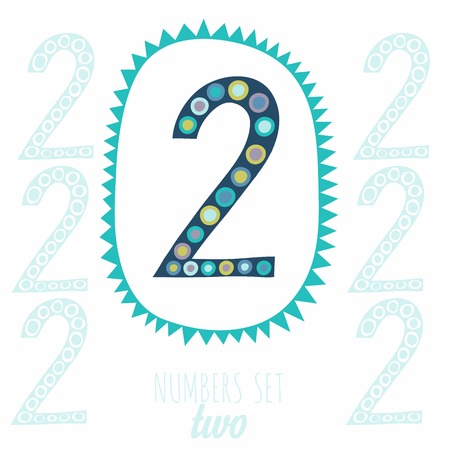Introduction to the Three-Card Tarot Spread
The three-card tarot spread stands as one of the most iconic and enduring methods of divination, particularly within the context of British culture. Its origins can be traced back to the late 18th and early 19th centuries, when tarot began to gain popularity in Europe as both a parlour game and a tool for spiritual insight. In Britain, the spread has evolved into a staple not only among seasoned tarot enthusiasts but also within the wider public consciousness, often associated with moments of reflection and personal guidance. The structure of the three-card spread is elegantly simple: typically representing past, present, and future, or alternatively, mind, body, and spirit. This format’s accessibility has contributed significantly to its widespread appeal across the UK, making it a favourite at gatherings from casual meet-ups in London coffee houses to more formal readings at country fairs. Moreover, the British approach to tarot embraces both traditional interpretations and unique local adaptations—such as integrating references to British folklore or aligning interpretations with seasonal customs like Beltane or Samhain. These cultural nuances enrich the practice, allowing it to remain relevant and deeply resonant within modern British society. The three-card spread’s enduring popularity thus reflects both its intrinsic versatility and its seamless integration into the fabric of British spiritual and social life.
2. Contemporary British Interpretations
Modern British tarot readers approach the three-card spread with an emphasis on relevance to everyday life and individual circumstances. While the classic positions—past, present, future—remain widely used, alternative layouts such as situation, action, and outcome have gained popularity, reflecting a pragmatic British mindset that values clarity and actionable insight. The table below illustrates how British practitioners commonly interpret each card position in both traditional and contemporary spreads:
| Card Position | Traditional Meaning | British Interpretation |
|---|---|---|
| Past | Events or influences from the past affecting the present. | Focus on formative experiences or cultural background, often referencing shared British history or personal anecdotes. |
| Present (Situation) | The current state or main issue at hand. | A practical assessment of current circumstances, sometimes highlighting social context or local challenges (e.g., cost of living). |
| Future (Outcome) | Probable direction or result if things continue unchanged. | An outcome grounded in realistic expectations, often with a touch of characteristic British scepticism about predictions. |
| Action (Alternative Spread) | N/A (not in classic layout) | Advice tailored to individual agency, encouraging thoughtful decision-making rather than fate acceptance. |
Personalisation is a hallmark of modern British tarot reading. Practitioners frequently weave in local idioms, regional references, and culturally resonant symbols—such as weather metaphors (“a bit cloudy” for uncertainty) or references to British public life—to make readings more relatable. There is also a conscious effort to avoid fatalism; instead, guidance is presented in a way that empowers querents to take ownership of their choices. This approach aligns with broader British values of self-determination and understated optimism, ensuring that each reading feels both authentic and supportive within its cultural context.

3. Cultural Influences and Local Symbolism
Modern British interpretations of the three-card tarot spread are deeply shaped by the nation’s unique cultural motifs, folklore, and iconography. Unlike generic or universal readings, British tarot practitioners often incorporate elements rooted in the UK’s distinct regional traditions and historic events, resulting in a more locally resonant experience.
Folklore as Interpretative Lens
British folklore—ranging from Arthurian legends to tales of faeries and mythical beasts—frequently informs the symbolism attributed to each card. For example, The Fool might be associated with the trickster figures of English folk stories, while The Hermit could echo the wisdom of Celtic druids or solitary wise women. Such associations allow practitioners to frame card meanings within narratives familiar to those steeped in local lore.
Historic Events Shaping Tarot Contexts
The impact of significant historical periods, such as the Industrial Revolution or wartime Britain, can also be traced in contemporary tarot interpretations. Cards denoting hardship or transformation may evoke images of collective endurance during the Blitz or societal change experienced during Victorian times. These references provide nuanced layers of meaning that resonate with British querents’ ancestral memory.
Regional Motifs and Iconography
Local symbolism—whether it be the White Rose of Yorkshire, Scottish thistles, or Welsh dragons—sometimes finds its way into customised decks or reading practices. These icons not only ground the tarot experience in a specific locality but also infuse readings with regional pride and identity. In practice, a three-card spread conducted in Cornwall may reference Cornish saints or seafaring traditions, further tailoring interpretations to audience and place.
This intertwining of tarot with national and regional heritage ensures that modern British approaches to the three-card spread are as much about cultural storytelling as they are about divination. By drawing upon folklore, historical context, and local symbols, British tarot readers create rich interpretative frameworks that honour both personal insight and collective identity.
4. Tarot Language and Terminology in the UK
The use of language within British tarot readings is a unique blend of tradition, regional colloquialisms, and modern expressions. This linguistic tapestry not only shapes the delivery of interpretations but also influences how clients receive and internalise the messages from a three-card spread. Unlike American or continental approaches, British tarot readers often employ distinctly local phrases, idioms, and terminology that resonate with clients’ lived experiences and cultural references.
Key British Phrases and Their Interpretative Impact
Tarot readings in the UK frequently feature idioms such as “not my cup of tea,” “carry on,” or “at sixes and sevens.” Such phrases add colour and relatability to readings. For instance, a card indicating confusion may be described as being “all at sea” or “in a right muddle.” These expressions are not just decorative; they ground the reading in familiar emotional landscapes, making interpretations more accessible and meaningful for British sitters.
Examples of British Tarot Terminology
| Term/Phrase | Typical Context | Interpretative Nuance |
|---|---|---|
| “Keep calm and carry on” | Coping with adversity (e.g., The Tower) | Encourages resilience and stoicism in the face of upheaval |
| “A sticky wicket” | Challenging situation (e.g., Five of Pentacles) | Highlights complexity; suggests caution and tact |
| “Bob’s your uncle” | Resolution or outcome (e.g., The World) | Simplifies complex results, giving reassurance |
| “Up the duff” | Unexpected change (e.g., Page of Cups) | Adds a playful tone to surprising news or developments |
| “Having a chinwag” | Communication (e.g., Two of Cups) | Suggests informal, open-hearted conversation is needed |
The Role of Regional Variations
The diversity within the UK itself means that tarot language can shift between Scottish, Welsh, Northern Irish, and various English dialects. A reader in Yorkshire might describe an opportunity as “nowt fancy but solid,” while one in London could say it’s “bang on.” These nuances foster rapport, encouraging clients to feel seen and understood within their own cultural context.
Implications for Delivery and Reception
This integration of local terminology does more than personalise a reading—it alters its psychological impact. British idioms often soften harsh truths or inject humour into difficult revelations, making challenging cards more palatable. Moreover, using familiar language can demystify tarot for newcomers, reducing barriers to understanding and engagement. Ultimately, these linguistic choices reflect a modern British approach that values both clarity and connection in the three-card spread.
5. Modern Practices and Community Trends
Within the contemporary British tarot scene, the approach to the three-card spread has evolved alongside broader societal shifts, leading to significant changes in both practice and community culture. Ethical considerations now take centre stage, with many practitioners emphasising consent, confidentiality, and a non-predictive stance that empowers rather than dictates outcomes for querents. This ethical focus reflects a wider British sensitivity towards personal boundaries and respect for individual autonomy.
Inclusivity and Representation
Modern British tarot communities are marked by a strong commitment to inclusivity. There is ongoing effort to make spaces welcoming regardless of gender identity, sexual orientation, ethnicity, or spiritual background. This is reflected in both the language used during readings and the imagery of newer British-designed decks, which often depict diverse figures and narratives, resonating with the multicultural reality of Britain today.
Digital Platforms and Online Engagement
The rise of digital platforms has profoundly shaped how the three-card spread is shared and interpreted. Many practitioners now offer remote readings via video calls or social media, making tarot accessible beyond traditional face-to-face settings. Online forums and Facebook groups have become hubs for learning, exchanging interpretations, and community support. These platforms encourage experimentation with spreads and techniques while fostering an ethos of open-minded discussion.
Community Events and Social Gatherings
In addition to digital engagement, physical meet-ups remain a vital part of the British tarot landscape. From local workshops in London cafes to festival tents in Glastonbury, enthusiasts gather to share insights, swap decks, and refine their skills together. These events often blend learning with social connection, reinforcing tarot’s role as both a personal tool and a community-building activity. As such, the modern British approach to the three-card spread reflects not only evolving technical practices but also a vibrant culture of inclusivity, ethics, and collective growth.
6. Case Studies: British Readers in Action
To provide a practical perspective on modern British approaches to the three-card tarot spread, this section presents real-life vignettes from experienced UK tarot practitioners. These case studies highlight not only how the cards are interpreted but also showcase British nuances in consultation style, client interaction, and aftercare.
Case Study 1: The Empathetic Listener
Emily, a London-based reader, begins her sessions with a cup of tea and informal conversation—a classic British ice-breaker. She uses the three-card spread (Past, Present, Future) to help a client reflect on career uncertainties. Emily’s approach is pragmatic: she avoids sensationalism and instead focuses on actionable insights. After the reading, she offers the client a written summary and recommends local resources for further support, reflecting the UK’s emphasis on responsible aftercare.
Case Study 2: The Community Connector
In Manchester, Tariq incorporates elements of local culture into his tarot practice. During a community event, he conducts a three-card reading (Situation, Challenge, Advice) for a small group. He encourages open discussion among participants, fostering a sense of shared experience—a hallmark of British community spirit. Following the session, Tariq invites attendees to join a monthly tarot circle for ongoing learning and mutual support.
Case Study 3: The Discreet Guide
Sophie operates in Edinburgh and is known for her discreet, confidential manner—valued traits in British consultancy work. During private readings, she tailors her language to align with the client’s comfort level and cultural background. Using the three-card spread (Mind, Body, Spirit), Sophie helps clients explore holistic well-being while providing practical recommendations for self-care and reputable UK-based wellness services post-session.
Key Takeaways from British Practice
These case studies illustrate several distinguishing features of modern British tarot practice: an emphasis on empathy and rapport-building; integration with local culture; encouragement of community participation; discretion and professionalism; and thorough aftercare. Collectively, these examples demonstrate how the three-card tarot spread is adapted within the UK to serve both individual needs and communal values while maintaining ethical standards.


